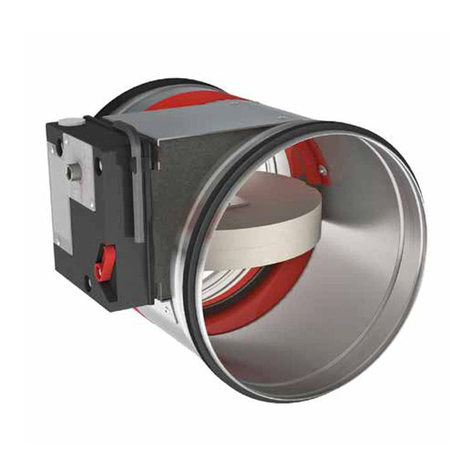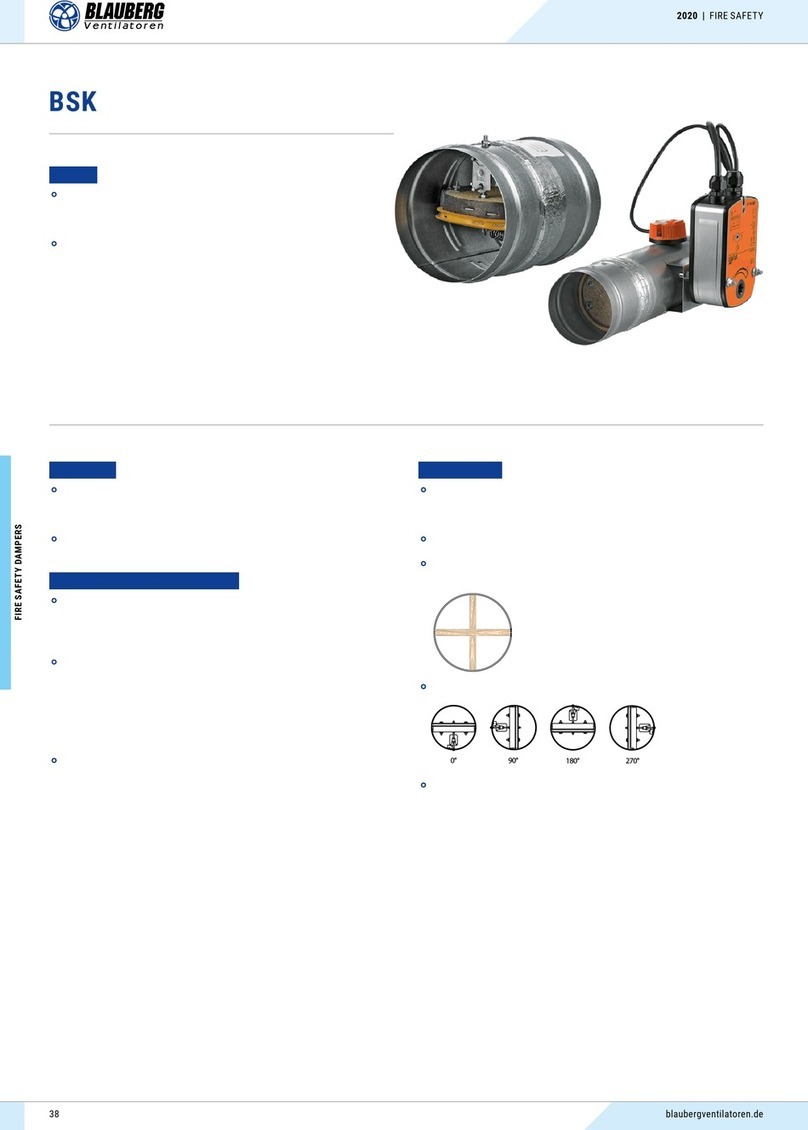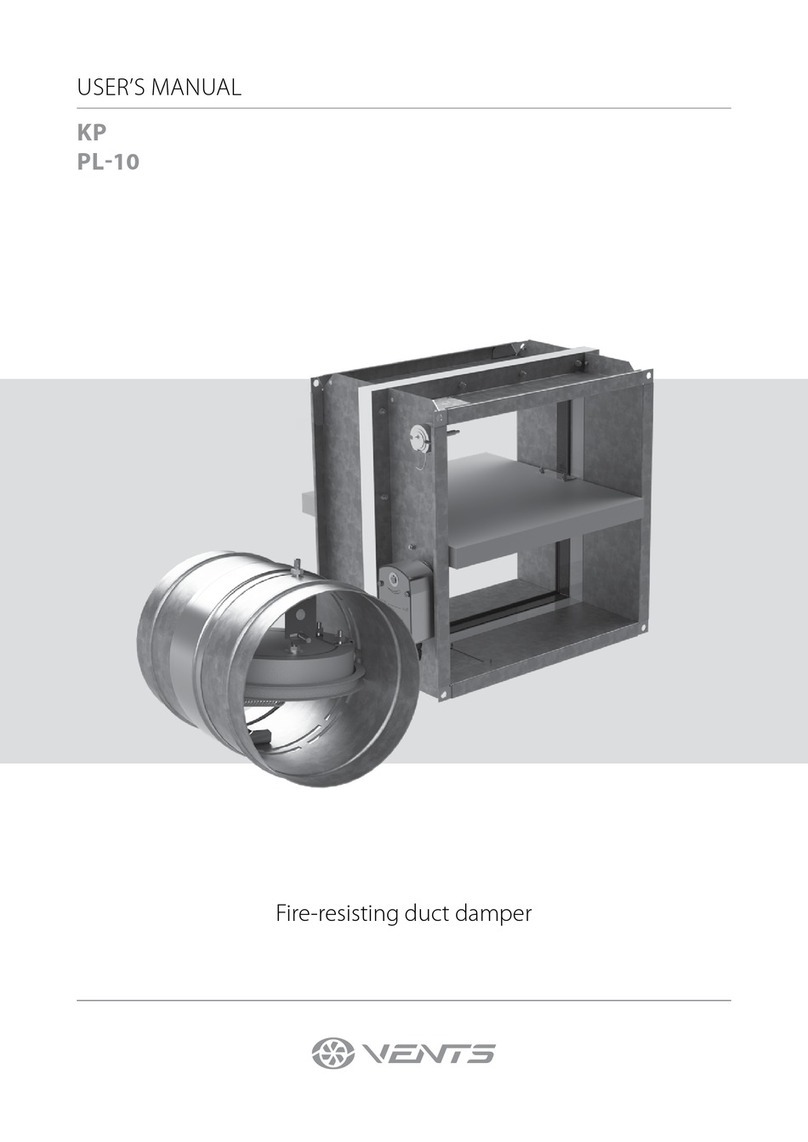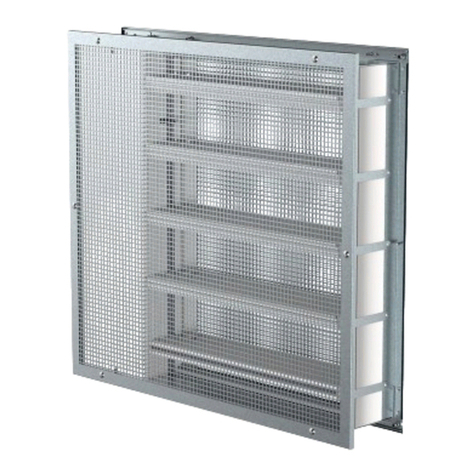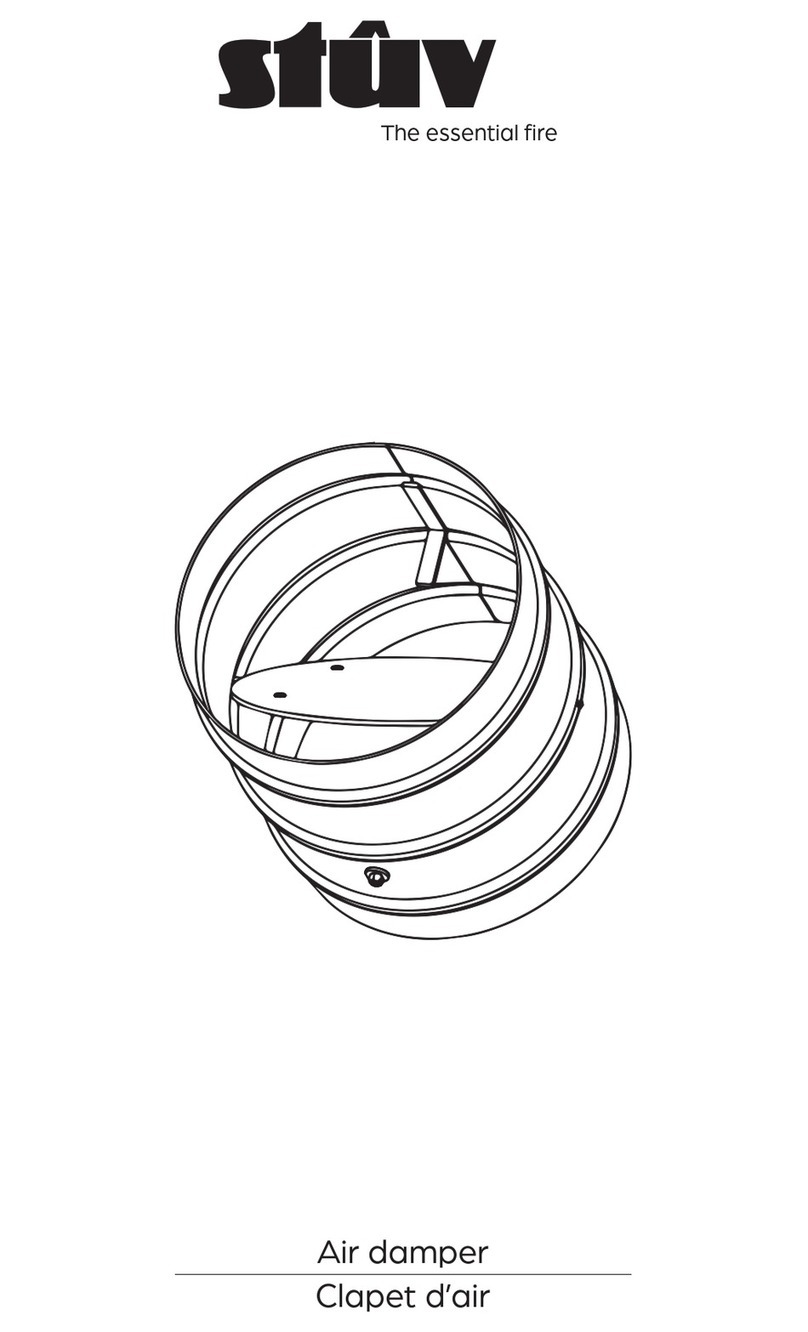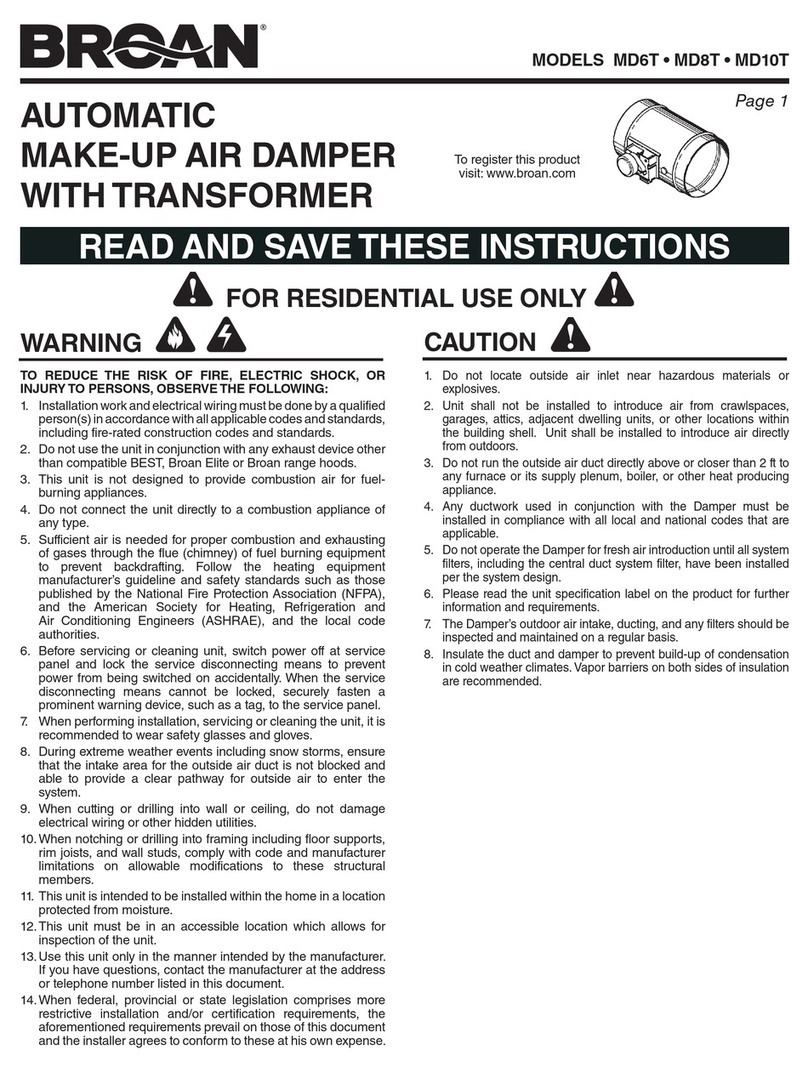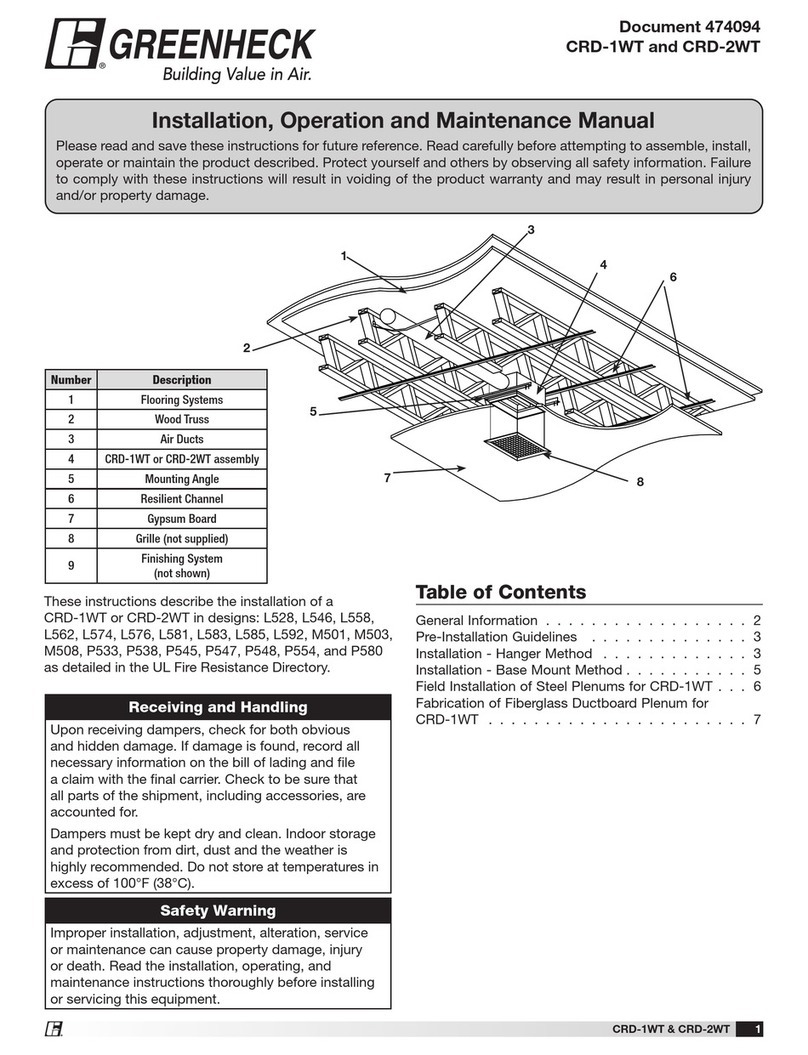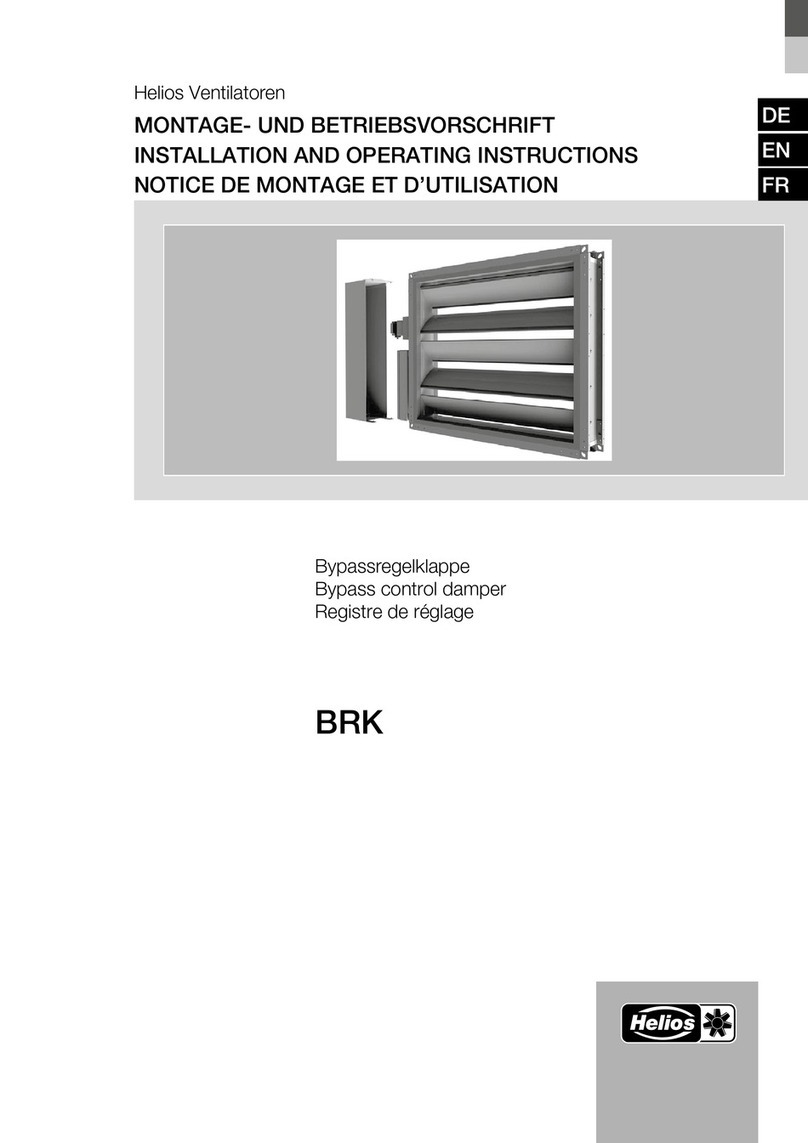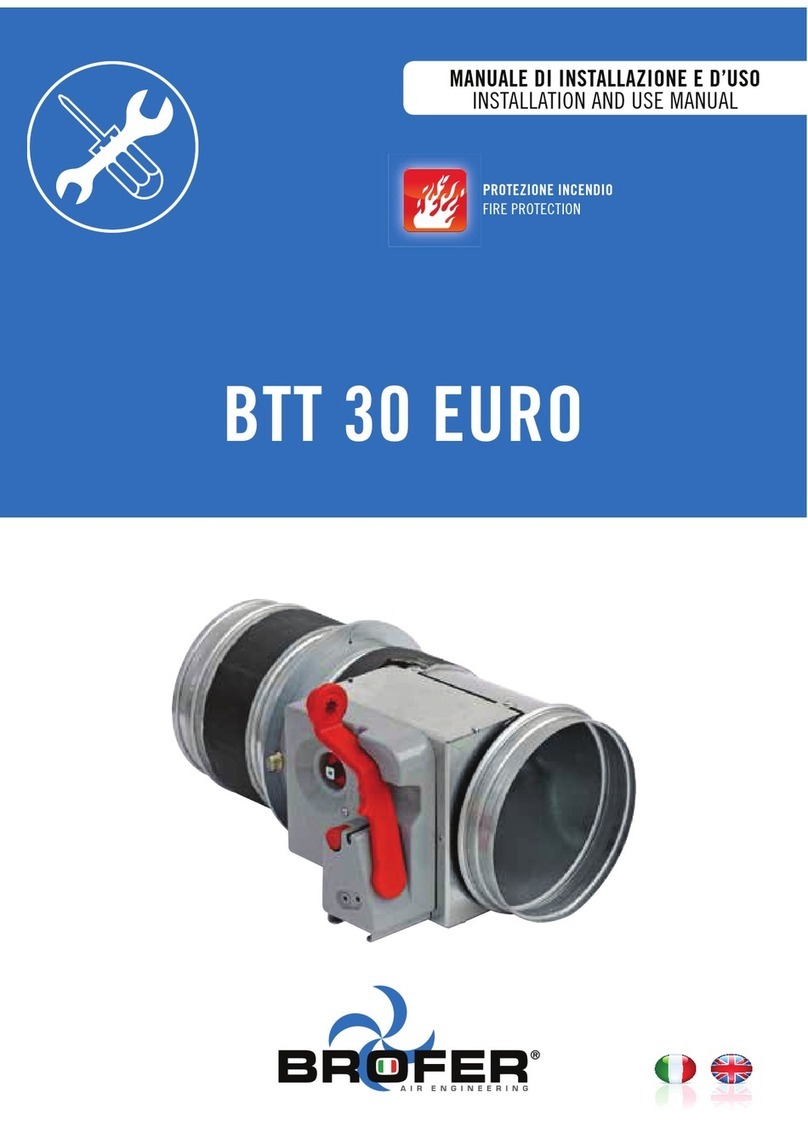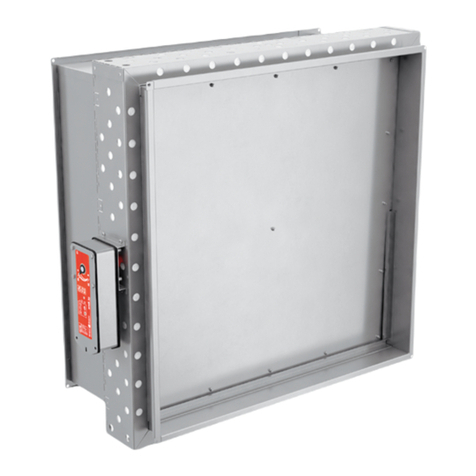Johnson Controls BD-1300 User manual

BD-1300 Control Dampers Installation Instructions 1
Applications
Since 1905, Johnson Controls has provided high
quality dampers that fit customer application and size
requirements. Continuing the legacy of application
based products, a balancing damper is now offered.
BD-1300 Balancing Dampers include:
• self-lubricating bearings
• rigid, 13-gauge frame
• 16-gauge blades
• single side linkage
BD-1300 balancing dampers are designed and built for
balancing or variable volume control only and must not
be used for tight shutoff. These dampers are intended
for manual operation but can be motorized when
required. No seals are provided.
BD-1300 dampers come in sizes that meet different
balancing application and environmental requirements.
These applications include, but are not limited to:
• volume (air) control applications, which regulate
airflow
• pressure control applications, which maintain a
constant pressure
• manual or motorized applications
• frames can be fastened together for larger sizes
Installation
Items Needed
• nut driver, 5/16 inch socket
• hammer
• hole saw, 1-1/4 inch
• drill bit, 3/16 inch (5 mm), No. 9 or 10
• drill
• No. 12 self-tapping or No. 10-24 machine screws
Orientation and Identification
BD-1300 series dampers may be installed with the
frame in either vertical (wall) or horizontal (floor or
ceiling) positions. The dampers may be positioned with
the blades running horizontal or vertical.
For clearance during installation, the dampers are built
1/4 in. inch smaller than nominal. For example, a
24 x 24 inch damper actually measures 23-3/4 x 23-3/4
inches.
Note: All Johnson Controls® damper dimensions are
from the outside edges of the damper section.
Mounting holes are provided in the section for either
No. 12 self-tapping screws or No. 10-24 machine
screws with nuts to secure the damper frame to ducts
or other frames.
IMPORTANT: BD-1300 Balancing Dampers are not
suitable for installation with the blades in a vertical
position for motorized applications.
Figure 1: Single Section Dimensions, in.
BD-1300 Control Dampers
Installation Instructions Part No. 44-352-35, Rev. C
Issued March 2016
44- 352- 35, Rev. C

BD-1300 Control Dampers Installation Instructions2
Use a 3/16 inch (5 mm) drill bit to drill holes through the
duct when securing the damper in place using screws
or rivets.
All damper sections include an identification label as
shown in Figure 2. The label identifies the following:
• the preferred driving blade
• damper model and size
• manufacturing date code (year/week)
• arrow indicating linkage end
• air leaving side
Installation Guidelines
Notes
Use the following notes as guidelines when installing
this product.
1. Check the damper schedules (furnished by others)
for proper placement. All dampers are identified
with their order number referenced.
2. Remove all shipping clips and the blade pin
extension before installing. Keep the blade pin
extension for future use. Refer to information
provided with the actuator for mounting details.
3. Arrange individual damper modules so that
sufficient clearance is allowed for the damper
actuators to be mounted on the linkage side of the
dampers.
4. Mount the dampers square and plumb with proper
alignment.
5. Install the blades horizontally, if possible. However,
vertical positioning is acceptable. See Figure 3.
6. Manually operate the dampers after installation to
verify that the blades move freely.
7. Use the mounting holes on both sides of the
channel to prevent twisting as shown in Figure 4.
8. On the side of the damper that contains the
concealed linkage, locate the preferred driving
blade (as identified by the blue label) and mounting
holes. See Figure 5. See the Actuators section for
alternate locations.
9. For externally mounted actuators, use a hole saw
to cut a 1-1/4 inch (32 mm) diameter hole in the
duct over the preferred driving blade pin.
10. For dampers with factory-installed side plates:
a. Cut a 3-3/4 inch (95 mm) slot in the duct side.
b. Slide the damper frame through the slot.
Figure 2: Identification Label
IMPORTANT: Be sure that the pilot drill does not
damage the blade pin.
Figure 3: Mounting Position
Figure 4: Twisting of Frame

BD-1300 Control Dampers Installation Instructions 3
c. Secure the damper frame to the duct.
Mounting holes are provided on the damper
frame as shown in Figure 6.
d. Use self-drilling screws to secure the side plate
to the duct.
e. Apply silicone sealant around all external
edges of the side plate and around the frame
inside the duct.
Horizontal Coupling
Figure 7 illustrates typical coupler mounting positions
for damper sections up to 76 inches high. Use of
DMPR-KC201 coupling kit is omitted when
independent damper section operation is required.
If the damper sections are to operate in the same
direction (both normally open or normally closed),
connect them together with the linkage side of one
damper connected to the non-linkage side of the next
damper as shown in Figure 8.
Figure 5: Preferred Driving Blade and Linkage
Side
Figure 6: Blade Pin Extension Installation
Figure 7: Coupler Locations
Figure 8: Horizontal Coupling

BD-1300 Control Dampers Installation Instructions4
Note: All dampers between 48 and 96 inches in width
will be factory coupled pin-to-pin only unless jackshaft
(Factory Option J in the Damper Selection Tool) is
requested.
Vertical Coupling
If the vertically coupled damper sections both operate
normally open or normally closed, connect them
together vertically with both linkage ends on the same
side as shown in Figure 9.
Attach the coupling hardware on the linkage side of
one damper section to the same odd numbered blade
of the other damper section. The vertical alignment
holes can be used to couple vertical dampers together.
Vertical reinforcement requirements vary based on the
size and number of damper sections forming the unit
and the closed off static pressure. Build reinforcements
from the DMPR-KC200 Support Bar Kit as shown in
Figure 10.
The following recommendations are based on tests
with 24 x 24 inch and 48 x 48 inch sections:
• Dampers having less than four blades per damper
utilize one support bar. Four or more blades per
damper utilize two support bars.
• Up to four dampers with a combined area up to
16 square feet maximum, based on a closed off
static pressure up to 4 inch water gauge (WG),
utilize one support bar; 4 to 8 inch WG utilize two
support bars.
• Dampers with a combined area of 14 to 64 square
feet maximum, based on a closed off static
pressure up to 2 inch WG, utilize two support bars;
2 to 4 inch WG utilize four support bars; and above
4 inch WG consult the factory.
For more information on kits to couple damper blades,
refer to M9000 Damper Accessory Kits Technical
Bulletin (LIT-2681105).
IMPORTANT: Do not insert screws in the vertical
alignment holes in the top and bottom channels
where they will interfere with blade operation.
Figure 9: Vertical Coupling
IMPORTANT: All installations which combine
vertically and horizontally joined sections must be
reinforced at the point where the four sections meet.
The amount and type of reinforcement is based on
the actual mounting arrangements, applications, and
functions.
Figure 10: Support Bar Kit

Published in U.S.A. www.johnsoncontrols.com
BD-1300 Control Dampers Installation Instructions 5
Metasys® and Johnson Controls® are registered trademarks of Johnson Controls, Inc.
All other marks herein are the marks of their respective owners. © 2016 Johnson Controls, Inc.
Building Efficiency
507 E. Michigan Street, Milwaukee, WI 53202
Actuators
For dampers using a single actuator, install the
direct-mount actuator or associated actuator linkage to
the linkage side of the preferred drive blade shown in
Table 1 and Table 2. The ideal situation is to use a
drive blade near the center of the damper height to
distribute the torque evenly. Use only odd numbered
blades for dampers with opposed blade rotation.
The actuators may be installed frame mounted inside
the duct (Figure 10) or wall mounted outside the duct at
locations indicated.
Attach one actuator to the preferred driving blade on
the linkage side of each damper section. Refer to the
appropriate actuator literature for proper damper sizing
information.
For frame mount actuator drives, when two sections
are coupled horizontally, the ideal situation is to mount
the actuator in the air stream at the junction of the two
damper sections as shown in Figure 11.
Table 1: Single Actuator Location
Height, in. Location
24 or less Blade No. 1 or 3
24 but 48 Blade No. 3 or 5
48 but 76 Blade No. 5 or 7
Table 2: Multiple Actuator Location
Height, in. Location
30 Blade Nos. 3 and 5
30 but 48 Blade Nos. 3 and 7
48 but 76 Blade Nos. 3 and 9
Figure 11: Actuator Bracket Location
European Single Point of Contact: NA/SA Single Point of Contact: APAC Single Point of Contact:
JOHNSON CONTROLS
WESTENDHOF 3
45143 ESSEN
GERMANY
JOHNSON CONTROLS
507 E MICHIGAN ST
MILWAUKEE WI 53202
USA
JOHNSON CONTROLS
C/O CONTROLS PRODUCT MANAGEMENT
NO. 22 BLOCK D NEW DISTRICT
WUXI JIANGSU PROVINCE 214142
CHINA
Other Johnson Controls Fire And Smoke Damper manuals
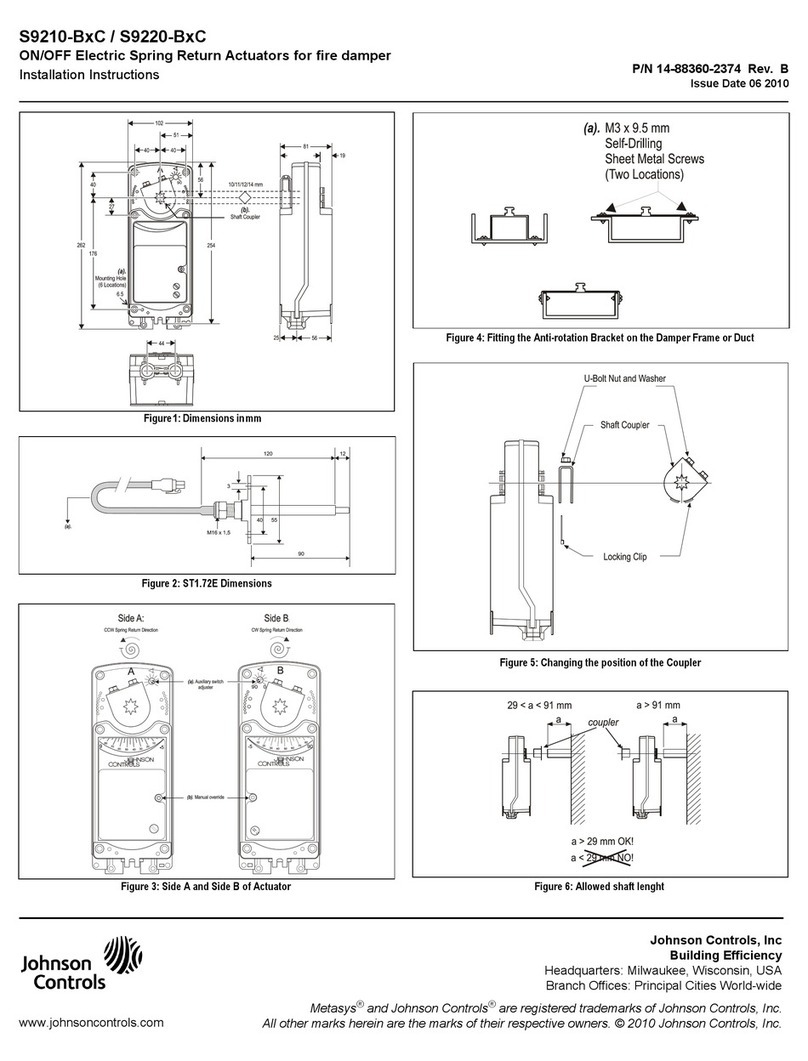
Johnson Controls
Johnson Controls S9210-BC Series User manual
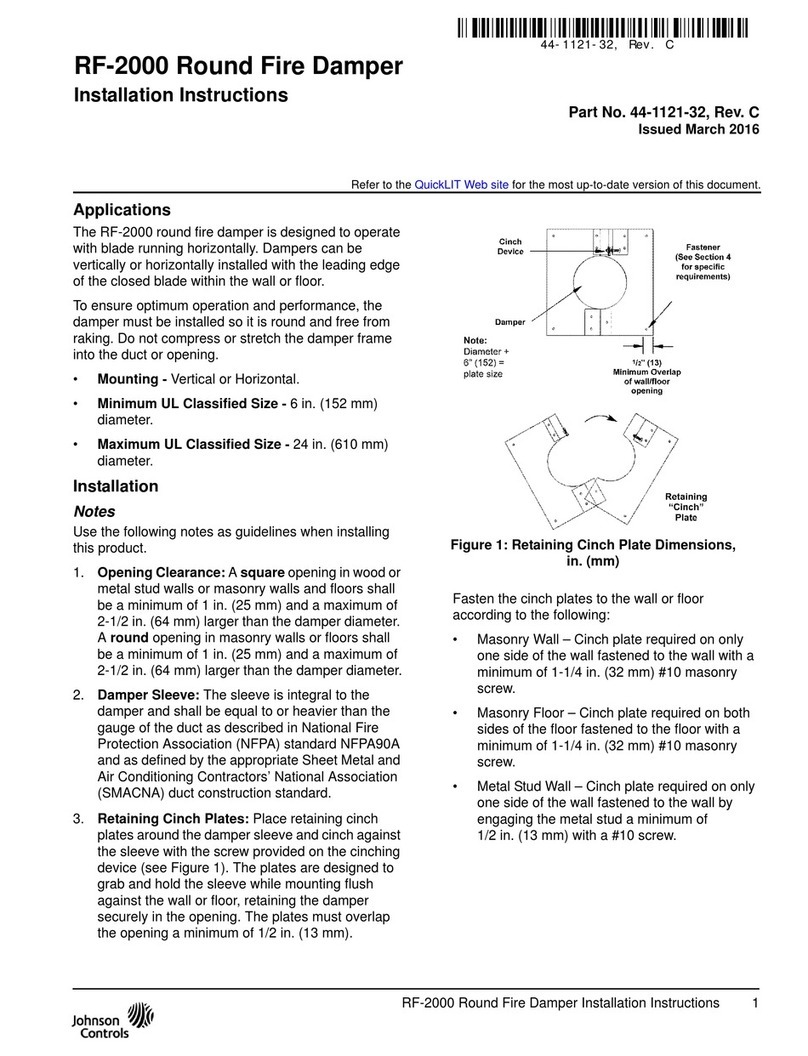
Johnson Controls
Johnson Controls RF-2000 User manual

Johnson Controls
Johnson Controls FD-1300 User manual
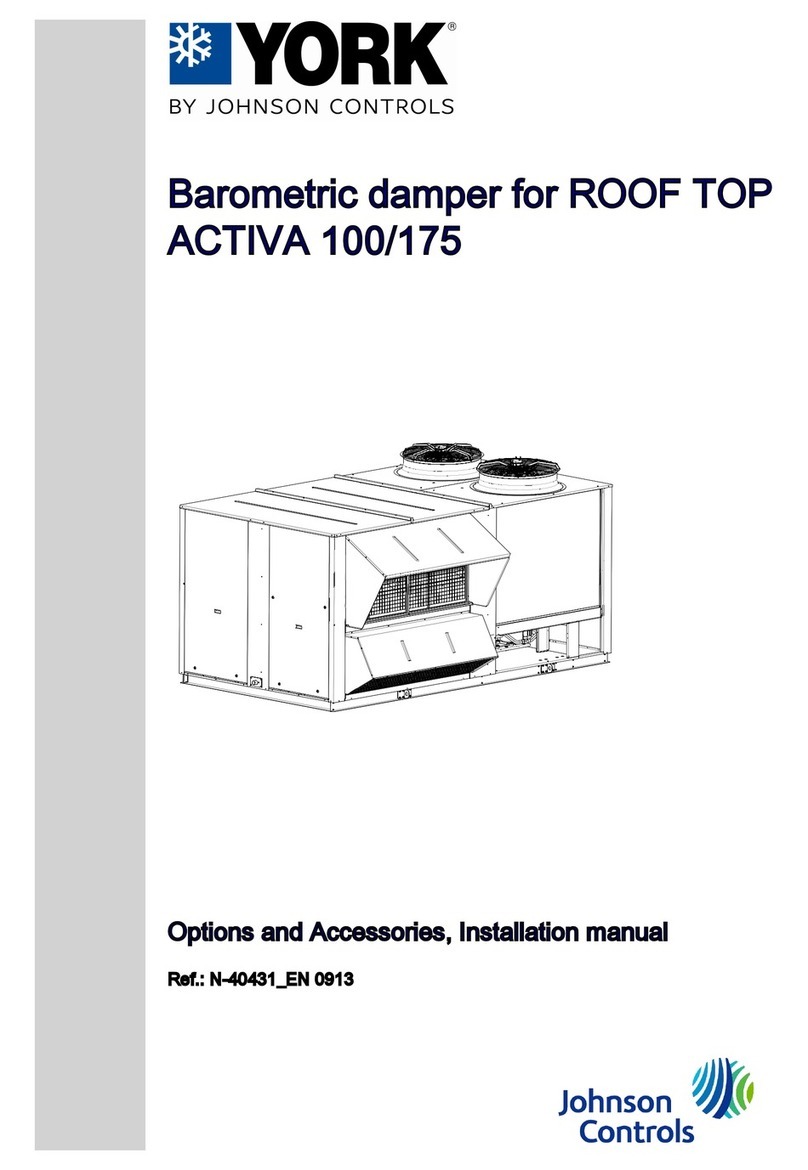
Johnson Controls
Johnson Controls YORK ACTIVA 100 User manual
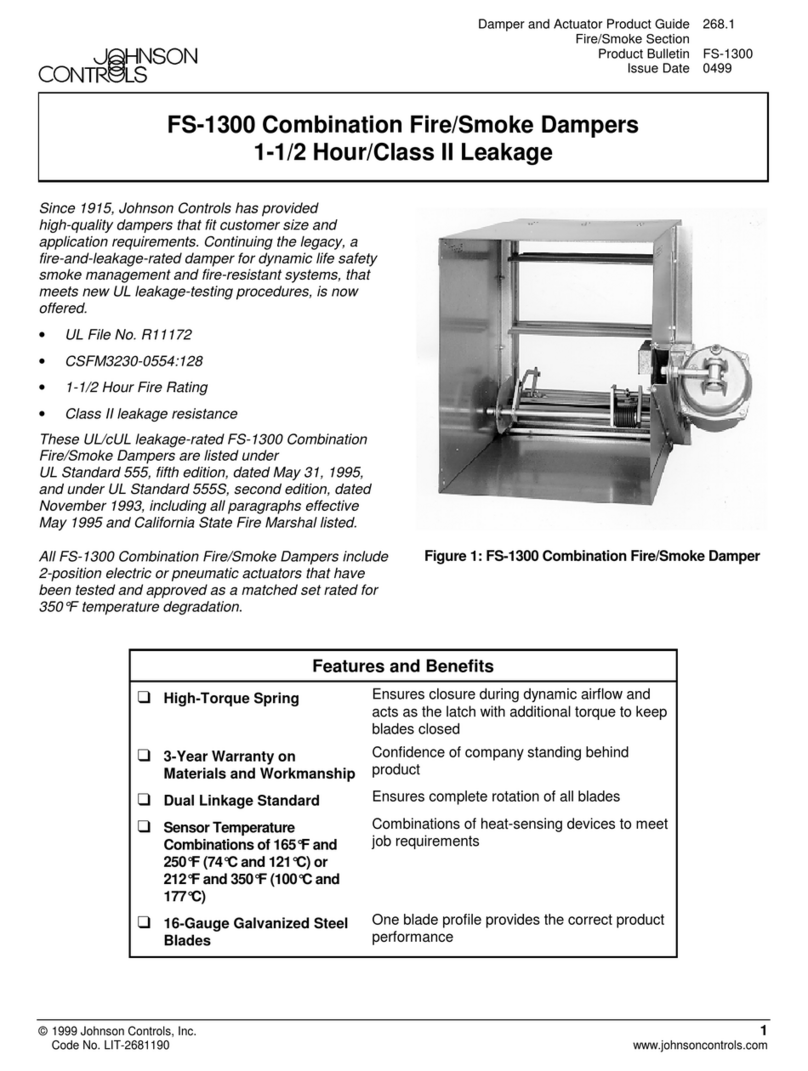
Johnson Controls
Johnson Controls FS-1300 User manual
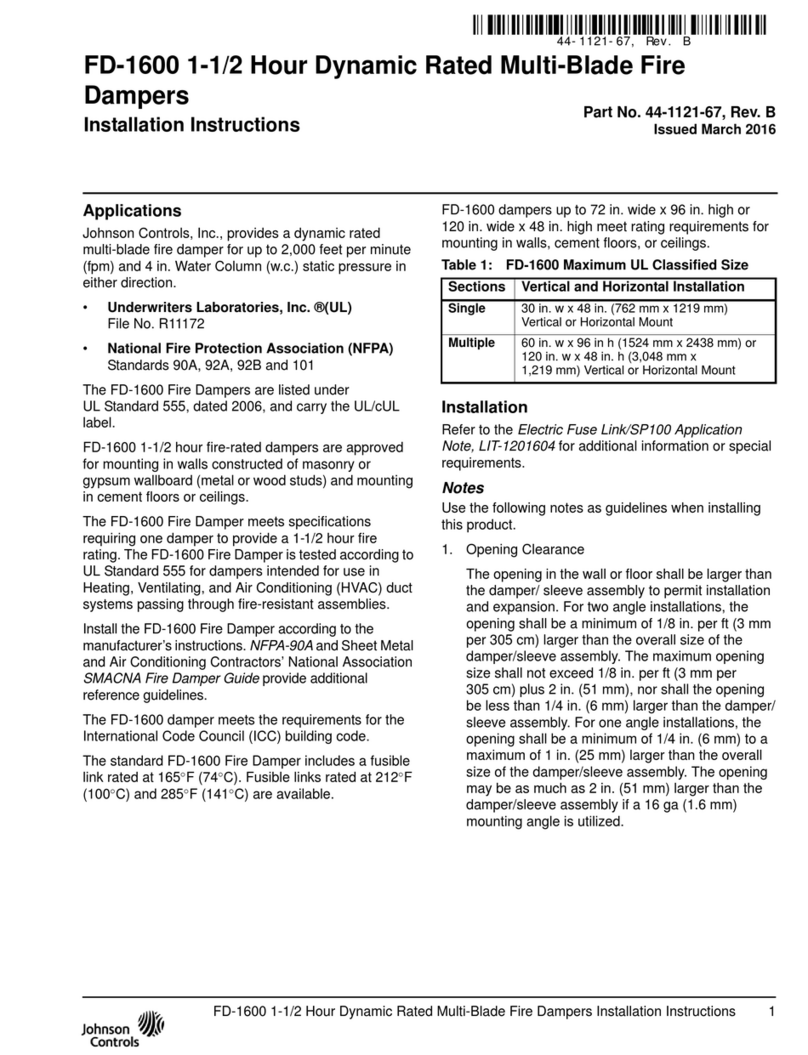
Johnson Controls
Johnson Controls FD-1600 User manual
Popular Fire And Smoke Damper manuals by other brands
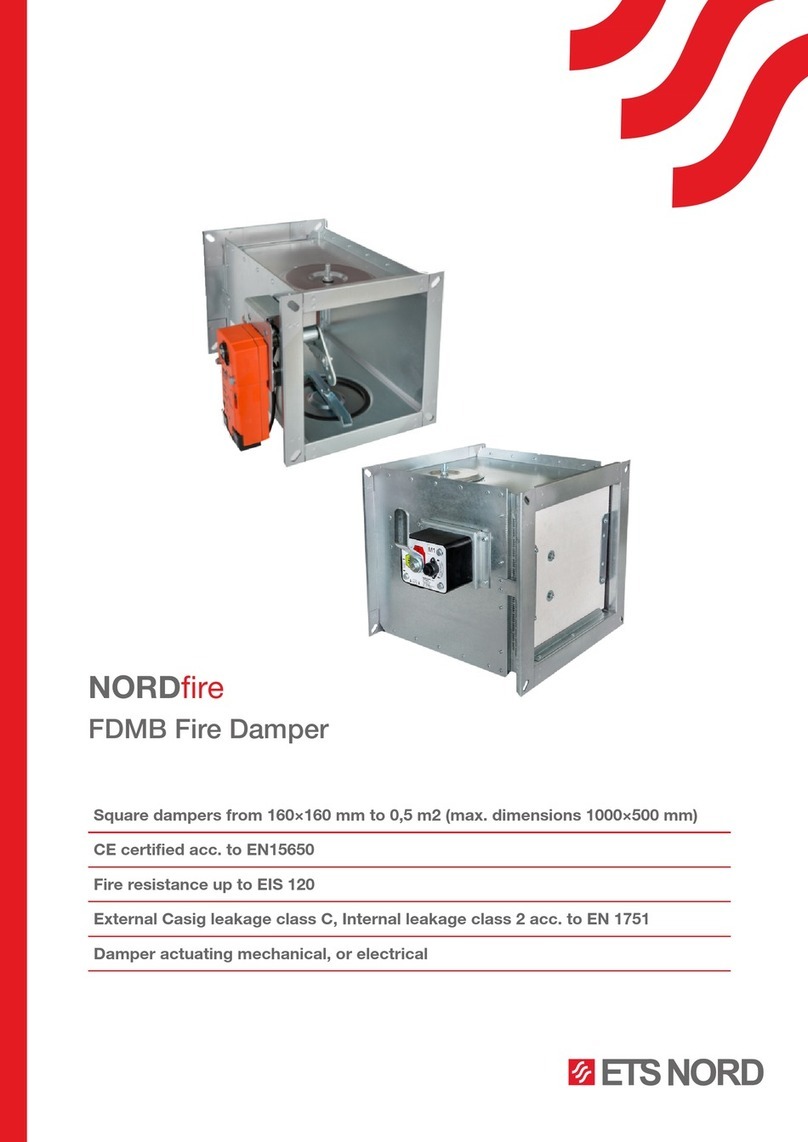
ETS NORD
ETS NORD NORDfire FDMB manual
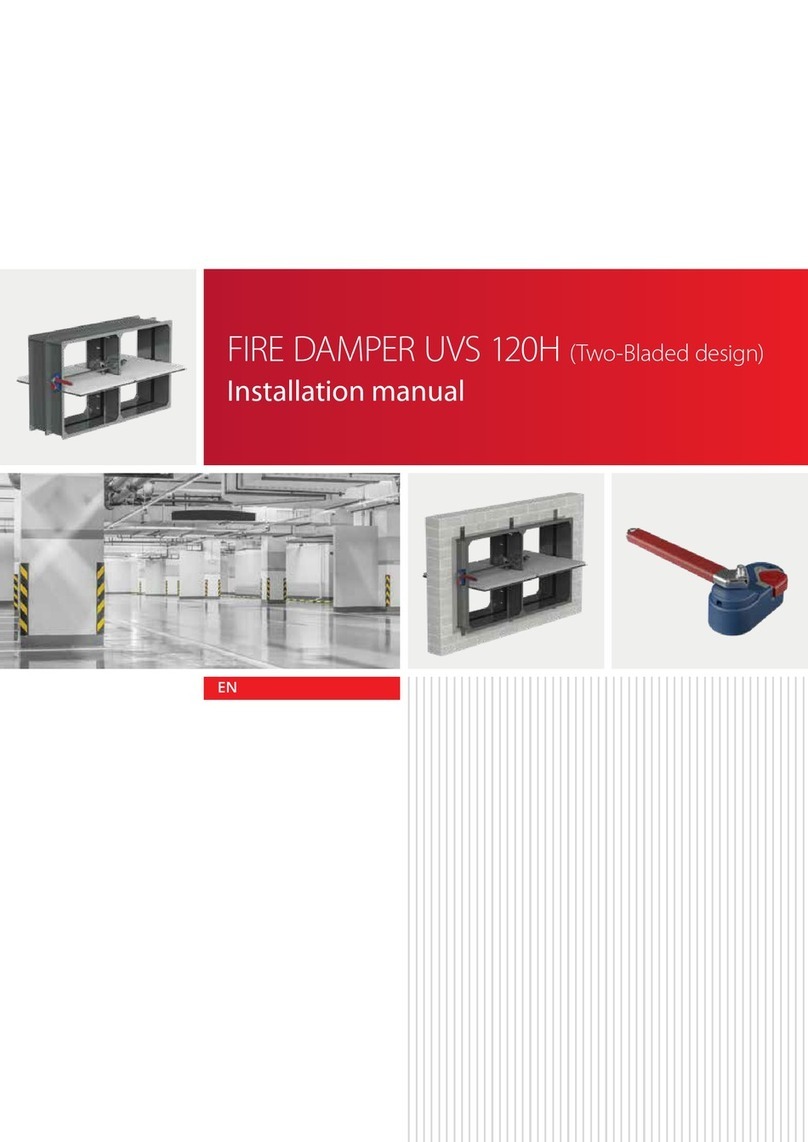
Komfovent
Komfovent UVS 120H installation manual
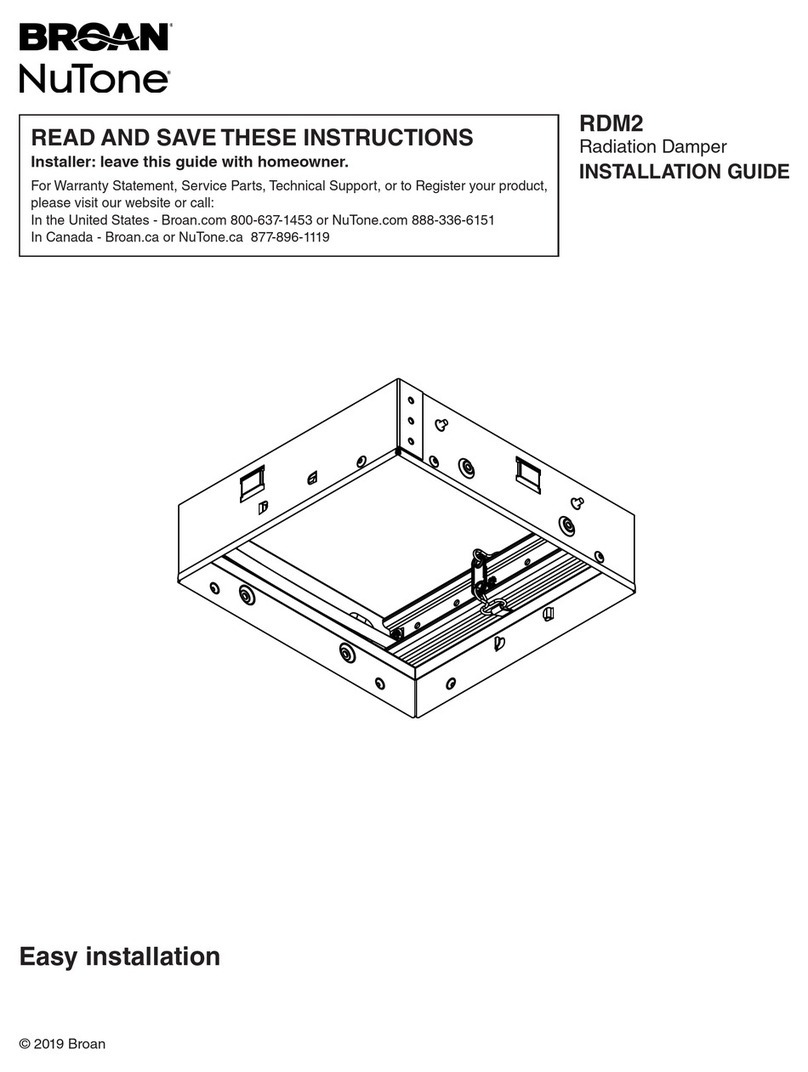
NuTone
NuTone RDM2 installation guide
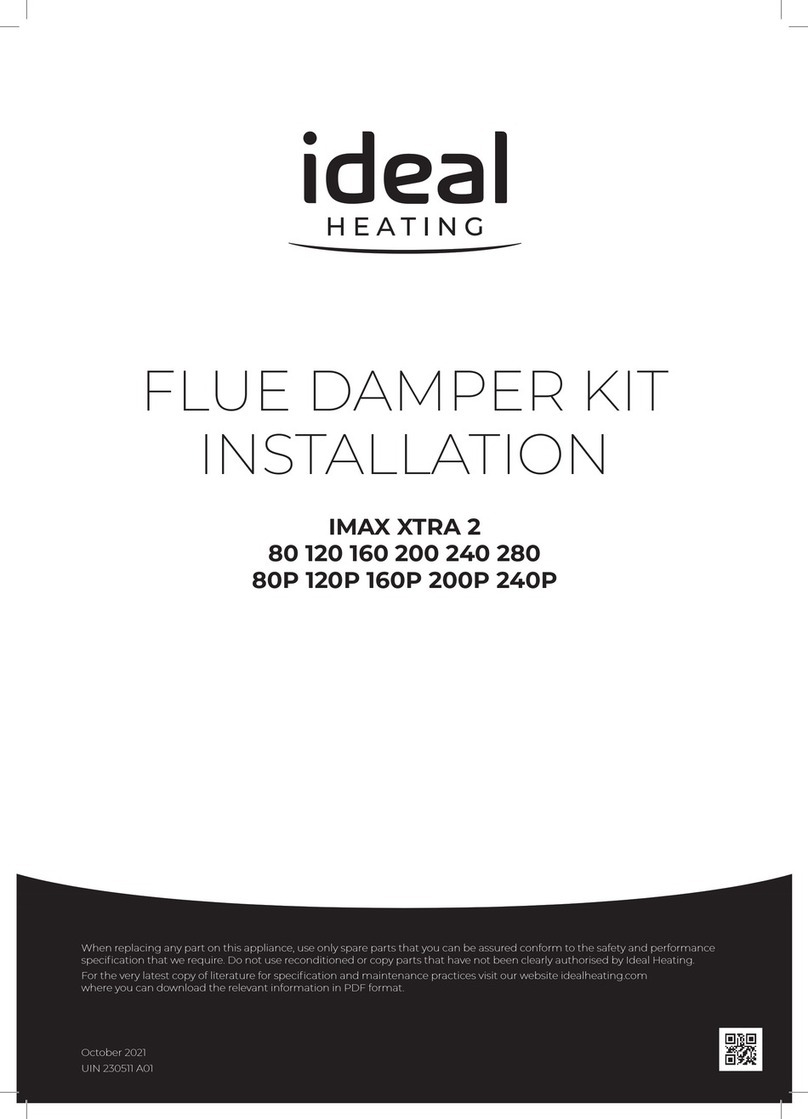
Ideal Heating
Ideal Heating EVOMAX 2 40 Installation
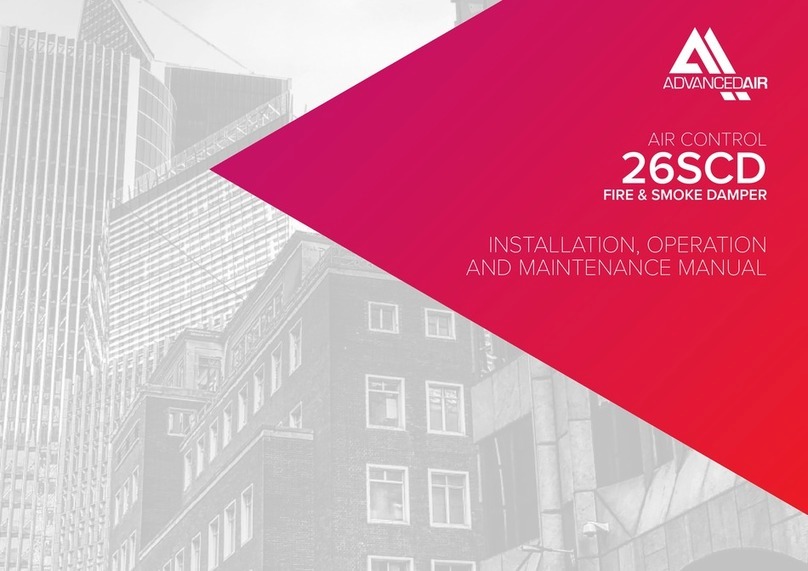
Advanced Air
Advanced Air 26SCD Installation, operation and maintenance manual
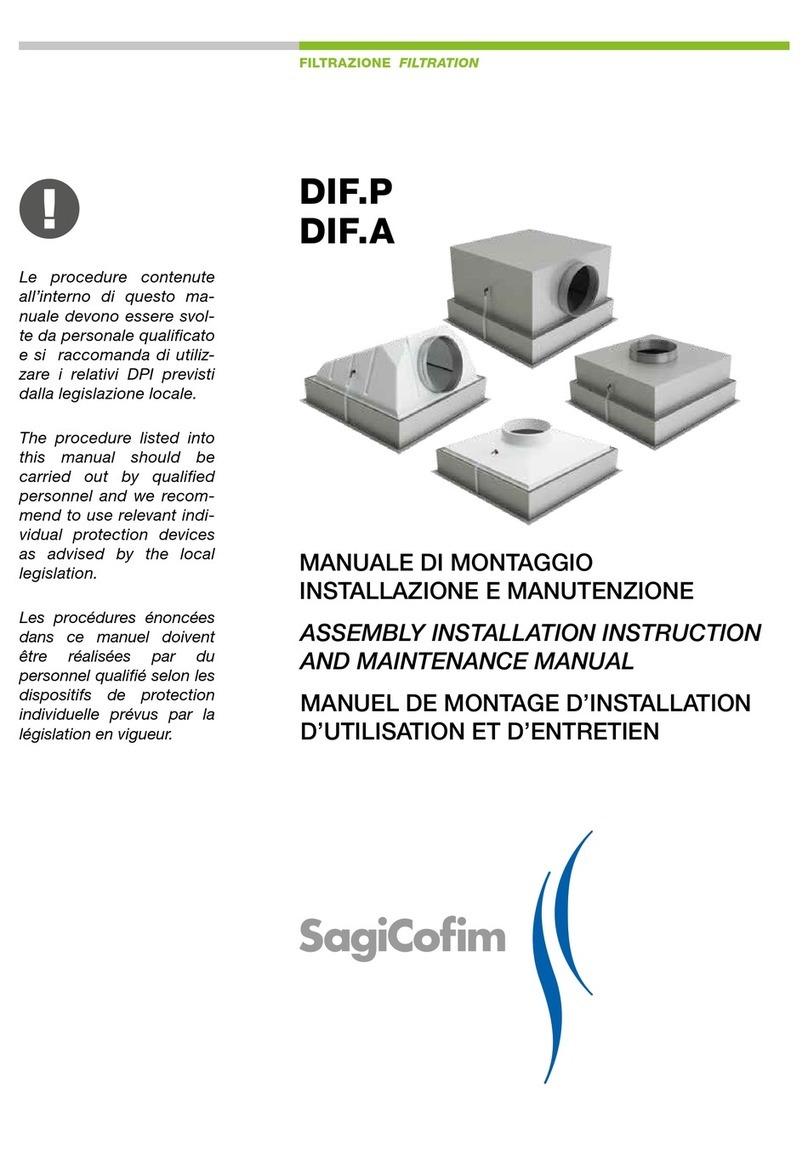
SagiCofim
SagiCofim DIF.P Assembly/installation instructions
